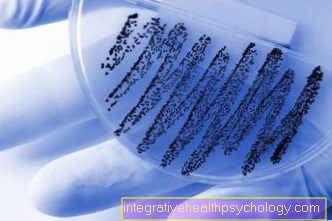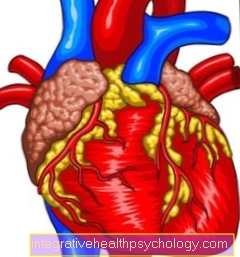Therapy methods of physiotherapy / physiotherapy
Note
This topic is an additional page on our topic:
- Physiotherapy / physiotherapy
The therapeutic approach in a physiotherapeutic treatment
At the beginning of a series of treatments, the therapist gets an overview of the patient's condition and problems, based on the contents of the medical prescription.
The therapist creates one based on a conversation, tactile and functional finding hypothesis about the root cause the dysfunction and develops a differentiated Treatment plan. Additional criteria for the preparation of the therapy plan result from the interdisciplinary cooperation with the prescribing doctor, occupational logotherapists, nursing staff, parents, teachers, etc.
If the treatment takes place in a group, the therapist must first have an overview
- the problems of the participants
- Your own goals and
- your individual level of performance
procure.
The selection of treatment techniques and duration of therapy and the decision on individual or group therapy are made on the one hand by the doctor's prescription, on the other hand the therapist orients himself on the previously created findings and his level of training.
Each treatment includes besides the specific treatment techniques Passive and active form of information about the causes and the course of the symptoms, as well as advice on continuing the learned movement sequences at home, in a group or in a club, and on healthy behavior in everyday life. With the use of passive forms of therapy, the therapist creates the conditions for the patient's own activity, i.e. the patient is supported by e.g. Pain relief (reduction of muscle tension = reduction of spasticity, e.g. in physically handicapped children) and - or increased mobility, enables you to actively improve and maintain the success of the treatment by performing an exercise program learned during the treatment. So will the patient active and independent over Behavior change in the healing process included.
During the course of treatment, the therapist must use documentation and measurement of results to get an idea of the success of the treatment and, if necessary, report the course of treatment to the prescribing doctor. To measure results, the therapist uses standardized test procedures, e.g. Measurement of the range of motion, strength, pain scales for assessing pain intensity and assessing functional processes.
After the individual therapy, as the symptoms subside, it makes sense to continue the exercises learned in the group. In addition to training, the focus here is on having fun and exchanging ideas with other people affected. A large number of different courses are offered by physiotherapy practices, adult education centers and clubs, and the respective health insurance companies can accept costs under certain conditions.
Passive therapy methods
In the following therapy methods, I limit myself to the most important treatment techniques that have been scientifically best researched and are included in the catalog of services of the health insurance companies.
Passive therapy methods include:
- Manual therapy
- Classic massage therapy
- Trigger point treatment
- Lymphatic drainage
- Heat therapy
- Cold treatment
- Electrotherapy
Manual therapy

The manual therapy is a protected, recognized therapy method, which is carried out in Germany by physiotherapists and osteopaths with corresponding additional qualifications and which can be prescribed by doctors within the framework of the Medicines Ordinance. The training largely coincides with the training in manual medicine / chiropractic, which doctors go through for their additional qualifications.
The term “manual therapy” is derived from the Latin word manus = hand and expresses that in this therapy process, primarily the therapist's hands - of course, eyes, ears and possibly an X-ray image are also used - the examination and treatment of perform functional disorders of the musculoskeletal system.
Indications:
- Functional joint disorders with restricted mobility in the area of the spinal joints (neck-chest-lumbar or pelvic joints)
- Functional joint disorders with restricted mobility in the area of the extremity joints (shoulder, knee, hip, etc.)
- Acute and chronic pain in the spine and extremity joints accompanied by hard muscles
- Restrictions in movement after immobilization
- Painful degenerative diseases
Manual therapy contraindication
Contraindications:
- disc prolapse
- Recent injuries to the bones or muscles
- bony malformations of the spine or joints
- Severe osteoporosis
- Vascular dizziness
- Acute inflammation of the spine or extremity joints e.g. acute rheumatic flare)
- Hypermobility
- Tumors and metastases
Examination:
Functional movement disorders arise in everyday life from recurring, often one-sided incorrect postures and movements, medically-related immobilization (e.g. splint, plaster of paris) or from acute incorrect loads such as bending and lifting.
In order to match the selection of therapeutic techniques as precisely as possible to the patient's individual problem, a active and Passive movement testing of the spine and extremity joints, as well as muscle performance and nerve function. Since our musculoskeletal system can only move economically and painlessly as a “functional unit”, it is important to examine and treat not only the location of the pain, but also all dependent body parts. Otherwise there will be no lasting treatment success.
Treatment:
The treatment of functional movement disorders is usually prepared by informing the patient about the existing problem, as well as using soft tissue techniques and applying heat to the muscles and connective tissue.
After that, existing Joint dysfunction (often incorrectly referred to as joint blocking) predominantly with soft Mobilization or less often Compression techniques treated so that a pain-free movement can then be performed again. A special form of manual therapy is the setting up or straightening of the joints with a short impulse with the help of breathing.
After the manual therapy treatment, the patient receives Mobilization exercisesin order to maintain the achieved free joint mobility and Strength exercisesto sustainably stabilize joints and spine and thus prevent new problems. The treatment also includes advice to the patient on back-friendly everyday behavior, as well as ergonomic design of a workplace.
Classic massage therapy
The word massage is derived from the Greek word "massein" and means "to knead". The classic massage was already known in antiquity and was mainly used to improve the performance of athletes. Nowadays, massage is a recognized remedy for the treatment of painful muscle tension and its subsequent ailments such as Headache and stress-related fatigue syndromes. A large number of manual techniques (strokes, kneading, vibration techniques, tapping) are used, which have different effects on the skin, connective tissue, muscles and lymph through different strong touch stimuli. The Effects are Promotion of blood circulation, muscular and psychological relaxation, pain relief and improvement of venous blood and lymph drainage (see also lymph drainage) To prepare for the massage, we recommend applying heat in the form of fango, hot air or a hot roller.
A classic massage therapy can be usefully supplemented by an active exercise treatment. A special form of massage is that
Trigger point treatment
Trigger points (= "Painful felting of muscle fibers"), are circumscribed muscular hardening that can cause symptoms such as local minor to excruciating pain, radiating pain, stiffness, weakness and restricted mobility.
Accompanying symptoms such as sweat, dizziness, Ringing in the ears etc. Trigger points are activated by acute or chronic (physical or psychological) overloading of the muscles, joint dysfunction, injuries or hypothermia.
Active trigger points can cause constant pain or stiffness, latent trigger points only react to pressure or strain, whereby the transitions can be fluid.
The examiner finds trigger points as easily palpable local indurations in the muscles, which react strongly with tenderness. The pressure of the finger often causes an involuntary evasive movement of the patient. The affected muscle also reacts to active or passive lengthening with pain, e.g. during a stretching exercise.
For relief, we recommend using moist heat or low-dose ultrasound as a preparatory measure.
Various methods can be used to treat trigger points:
- The therapist applies sustained pressure to the point by pre-stretching the muscle until it is inactivated. He can use his thumb or an appropriate massage stick for this. This triggers a so-called “wellbeing” in the patient, which turns into a relieving, relaxed feeling.
- The deep friction massage involves massaging across the course of the muscle fibers
- Circular massage grips around the trigger point
- Stroking massage movements with increasing pressure in the longitudinal direction of the muscle fibers
- In PIR = post-isometric relaxation, the patient actively tenses the affected muscle from a stretched position and holds the tension for approx. 10 seconds. In the relaxation phase, the therapist carefully guides the muscle further into the stretched position.
- Shock wave treatment
- Acupuncture of the trigger points
- Infiltration of certain drugs
Effects the various treatment techniques are about that Stimulation of blood circulation and Relaxation the trigger points Pain relief and more economical exercise behavior.
Self-treatment of the patient can be:
- Avoid the muscular strain that causes pain
- Active mobilization exercises, slowly guided stretches
- Nordic walking or alternative sports
- Moist heat (e.g.Grain bags, hot rolls - see below - or pads with moist, warm towels)
- Trigger point massage with tennis balls
- Decrease (reduction) of caffeine, nicotine and alcohol
For more information on trigger point treatment, see the main page: Trigger point therapy
Lymphatic drainage
The area of application of the manual Lymphatic drainage is mainly the treatment of Lymphatic congestion Affected body regions, which is mainly represented by swelling of the extremities (arm or leg) or the trunk.
Lymph congestion can e.g. through injuries, operations, removal of Lymph nodes at a Cancer arise. Using gentle circular or stroking displacement techniques, fluid is drawn from the tissue into the Lymphatic system postponed.
The therapy can be supported by compression bandages, special skin care and decongestive gymnastics. The effects of lymphatic drainage are rapid pain relief and acceleration of the healing process by reducing the swelling of the swollen tissue overloaded with cell fluid. Lymphatic drainage is used by therapists with appropriate additional training at approved teaching institutes.
The use of preparatory passive measures such as heat or cold therapy is one of the forms of physical therapy. Basically recommended Heat therapy rather for chronic complaints in the musculoskeletal system and organ system, Cold therapy for acute problems such as accidents and acute inflammatory processes.
Heat therapy
Heat therapy includes the following therapy methods:
- Fango
- Hot air
- Hot role
Find out all about the topic here: Heat therapy.
Fango
As a substitute for the use of purely naturally occurring mud (e.g. in certain Italian health resorts), moor paraffin packs are used in most practices today.
The starting material here is a paraffin wax that has been mixed with natural moor or fango. The packs are applied or placed on the skin, the patient is additionally wrapped in blankets for a period of 20-40 minutes to store heat and comfortably positioned. The effect is through the promotion of blood circulation, muscle and connective tissue loosening, especially pain relief and general relaxation. The application of heat should be sensibly combined with other passive and / or active measures of physiotherapy / physiotherapy.
Hot air
In hot air treatment, the main use of heat is irradiation with red light on the painful - tense back areas. The effects are similar to the application of heat with fango, but not such an intensive deep heating and no chemical effect are achieved.
This remedy is also used as a preparatory application for other forms of therapy.
Hot role
To carry out this form of moist heat supply, 3 towels are rolled up in a funnel shape and soaked in boiling water.
In order to maintain the supply of heat for as long as possible, the wipes are unwound from the outside inwards and dabbed or rolled off on the patient's skin.
This form of Heat application Has an intensive circulation-promoting and relaxing effect on muscles, connective tissue and psyche and is therefore often used for the accompanying treatment of complaints in the muscle system (see trigger point treatment). In addition, the hot role is a sensible preparation for breathing therapy measures, as it is expectorant in chronic respiratory diseases such as asthma or bronchitis works.
Cold therapy
The Cold therapy is sometimes also medicinally as Cryotherapy designated.
Cold treatment = Withdrawal of heat as Long-term use with temperatures above 0 ° Celsius by applying cooling compresses, cold towels, alcohol, (externally) quark packs.
Short-term use in the form of so-called ice lollies or sprays
Cryotherapy = Withdrawal of heat with temperatures below 0 ° Celsius through the use of cold gas, crushed ice, (ice cubes in the food processor) whole-body application by staying in a cold chamber (rheumatism center).
Besides the analgesic and decongestant effect In the case of acute injuries such as strains or bruises, cold is also used with symptoms of overuse such as B the Tendinitis or bursitis used. Cold therapy is of great importance in the treatment of inflammatory joints in diseases of the rheumatic type. Short-term use with ice causes one Stimulation of muscle activity (muscles) and is used to support the treatment of symptoms of paralysis.
The duration of cold therapy differs in terms of the form of application, the illness and the area of application and must therefore be discussed with the therapist before using it at home.
Electrotherapy
The Electrotherapy is the therapeutic application of various forms of current with the aim of stimulating blood circulation, reducing inflammation, relieving pain or activating muscle activity. Electrotherapy is used for acute or chronic forms of pain and inflammation of various causes, for flaccid or spastic paralysis and to activate weakened muscles. It is often used in combination with active forms of physiotherapy.
I would particularly like to mention the use of the TENS device, which the patient can use independently several times a day in the form of an easy-to-use, handy device at home and has proven itself especially in the treatment of chronic forms of pain.
-> Read more about electrotherapy
Note on cryotherapy
Important: When applying cold compresses, place a thin cotton cloth underneath to protect the skin, do not apply the compress directly to protruding bone points such as Kneecap.
Active therapy methods
When choosing the active forms of treatment in physiotherapy, we limit ourselves to the techniques that have been scientifically best researched and that are included in the catalog of services of the health insurance companies.
Due to the amount of information you will find on the following pages:
- General physiotherapy
- Device-assisted physiotherapy
- Neurophysiological physiotherapy
General information can be found under our topic: Physiotherapy
All topics that have been published in the field of orthopedics can be found under: Orthopedics A-Z


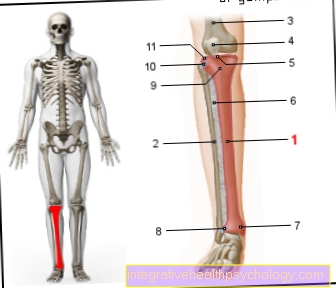
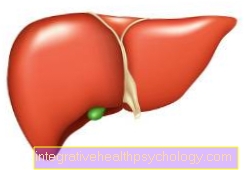
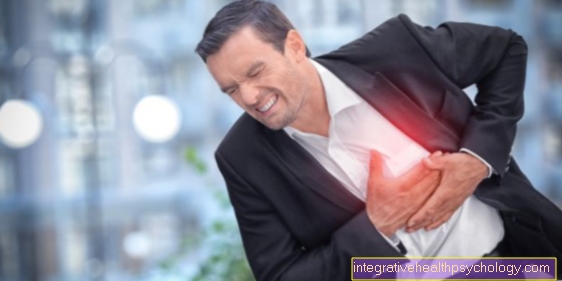
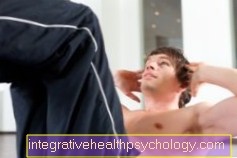


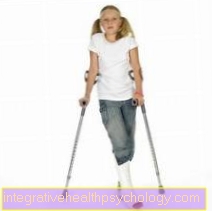

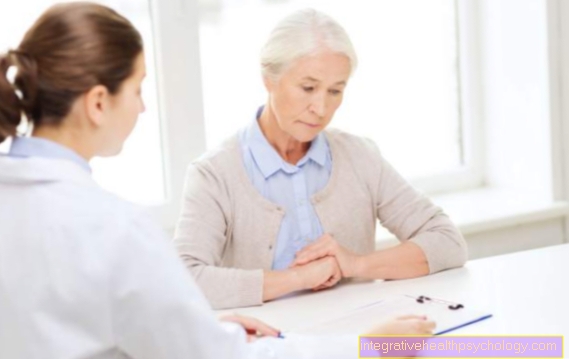

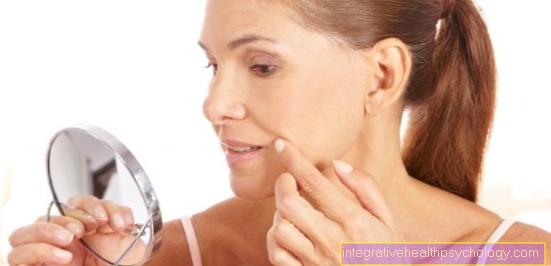

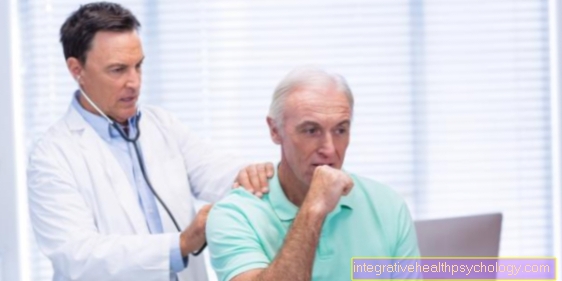

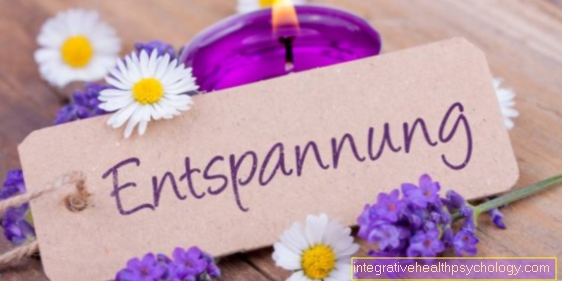

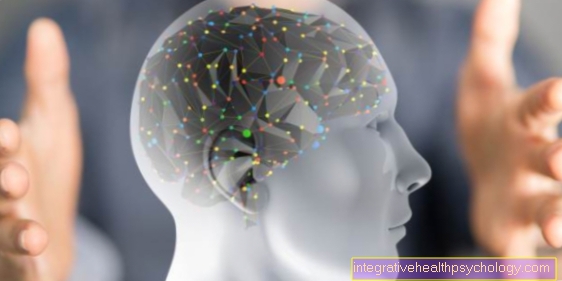

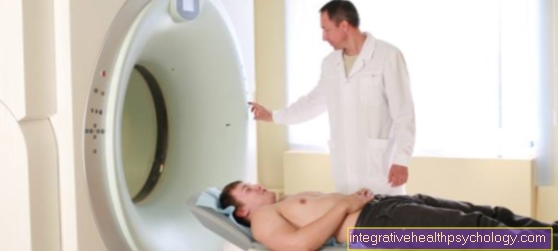
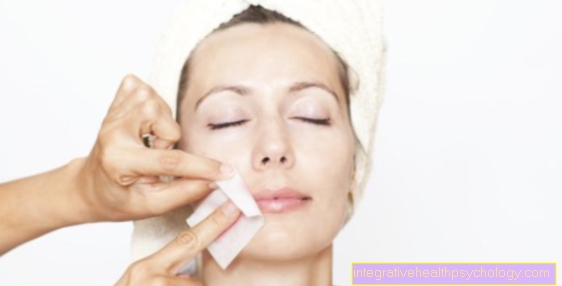
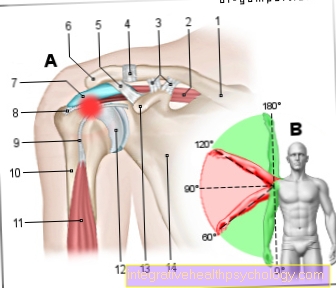
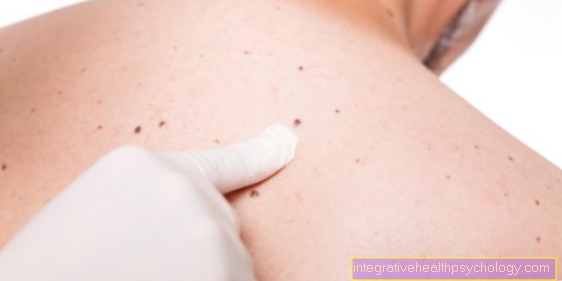
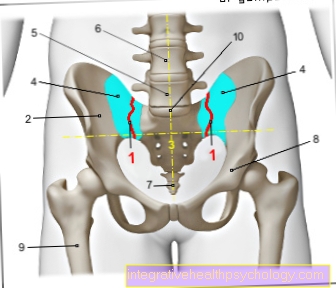
.jpg)

